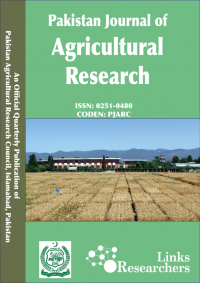Raania Ahsan* and Zafar Altaf**
ABSTRACT
This article reviews development, adoption and performance of Bt cotton against the background of monopoly pricing of its seed in Pakistan. The area under illegal Bt cotton is 80 % with nearly 36 unapproved varieties. Most of these varieties are Cotton leaf curl virus susceptible, poor in fiber quality and high input demanding unapproved varieties. Almost all these varieties employed Monsanto Cry1Acgene (MON 531) as it was not patented in Pakistan. A positive development was approval of Monsanto plan to introduce advanced genetically modified (GM) crop technology in Pakistan by Government of Pakistan during 2009. In this regard Ministry of Food and Agriculture (MINFA) has been working on a two pronged strategy i.e. developing the technology through indigenous capabilities as well as inviting the multi-national companies (MNCs) to bring in the latest cotton production and protection in the country. Bt cotton can play a significant role to enhance agricultural productivity as the productivity of cotton in Pakistan 0.5 t ha-1, as compared productivity of Bt cotton in China 9 t ha_1, which implies a huge cotton productivity gap. This gap can be narrowed down by the adoption of Bt cotton in Pakistan which will have major impact on food security efforts in the country. The findings of literature review revealed that Bt technology significantly reduces pesticide application and increases yields; however, these advantages are curbed by the high prices charged for genetically modified illegal cotton seeds in the country. National Biosafety Guidelines of 2005, must be followed to approve all genetically modified crop varieties including cotton. This will encourage the introduction of this advanced technology through legal means with its complete package of benefits. After approval of Bt cotton cultivation by Government of Pakistan, R&D sector should be encouraged to transfer BtCry genes into such genetic backgrounds which: (i) must have resistance against CLCuV, (ii) are suitable for a given ecology, (iii) meet the set fiber quality parameters (fiber length and strength, GOT% etc.) and (iv) other desirable features required for the release of a normal commercial variety
To share on other social networks, click on any share button. What are these?







